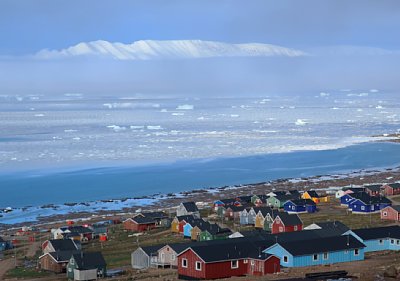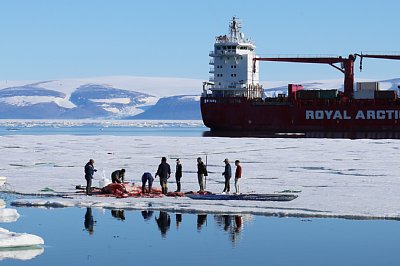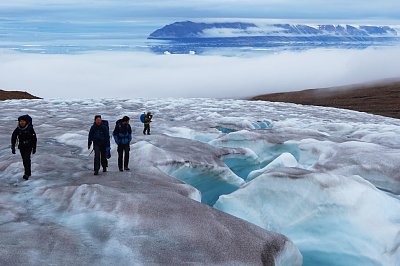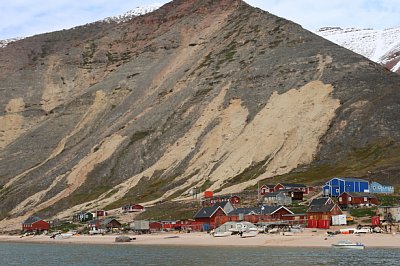



Rapidly changing climate is affecting the natural environment and society along the coast of Greenland.




Rapidly changing climate is affecting the natural environment and society along the coast of Greenland.
Back ground of the study
Qaanaaq –study site–
Coastal environments around Greenland are rapidly changing under the
influence of a warming climate. Glaciers are melting and glacial
meltwater discharge is affecting ocean environments, resulting in a
wide range of impacts on marine ecosystems. Steep terrains along the
coast are destabilized by thawing permafrost and more frequent heavy
rain events. These changes in natural environments are serious
concerns of Greenlandic societies. An increasing amount of glacial
melt causes flooding of streams. Settlements at the foot of steep
slopes are threatened by landslide hazards. To investigate changing
coastal environments and their impact on society in Greenland, we have
been running a research project in Qaanaaq, a small village in
northwestern Greenland, under the framework of Japanese Arctic
research projects GRENE
(Green Network of
Excellence), ArCS
(Arctic Challenge for Sustainability)
and ArCS II.
Natural envirnment change
On Qaanaaq Ice Cap, annual mass balance and ice speed have been
measured since 2012 to investigate glacier changes and processes
driving rapid ice loss. Discharge of a glacial stream is measured to
study the mechanism of foods, which frequently destroy a road
connecting the village with Oaanaaq Airport. In a nearby smaller
settlement Siorapaluk, a slope affected by a landslide is surveyed to
study the triggering mechanism of the failure. Research activities are
also performed in glacial fjords, Bowdoin Fjord and Inglefield
Bredening. Using boats operated by local collaborators, seawater
properties are measured, moorings are installed for year-round
measurements, and habitats of fish, seabirds and marine mammals are
surveyed. Biologger tagging is performed in collaboration with hunters
as well as a researcher from the Greenland Institute of Natural
Resources in Nuuk.
Social aspect
Recently, our study has expanded to more society related research
subjects. A dump site in the village is surveyed by waste management
engineers to investigate possible soil and water
pollution. Measurements are also carried out in houses to evaluate
the performance of the buildings for energy efficiency and a healthy
living environment.
Involvement of Qaanaaq society
Project activities and study results are reported to the community in
workshops in Qaanaaq every year since 2016. About 50 people attend
presentations by researchers. The focus of discussion after the
presentations is health and safety. Questions are raised about
possible pollution around the dump site and concentrations of toxic
substances in animals. The involvement of local society in scientific
research is a matter of importance in the Arctic. To contribute
sustainable future of Arctic societies, we continue collaboration,
conversation and designing research together with the local community.
Project framework
This project is running
under Arctic Challenge
for Sustainability Project II (ArCS II). ArCS II is a Japanese
initiative to investigate rapidly changing Arctic and its influence to
global environment and society. Our study is one of the ArCS II
research
projects "Arctic
Coastal Change and Its Impact on Society" and supported by ILTS as
one of
the Research
Program of Joint Research Division.
Field campaign 2022
Field campaign 2023
Field campaign 2024
Project members
Publications
Previous project (GRENE 2011-2015)
Previous project (ArCS 2015-2020)